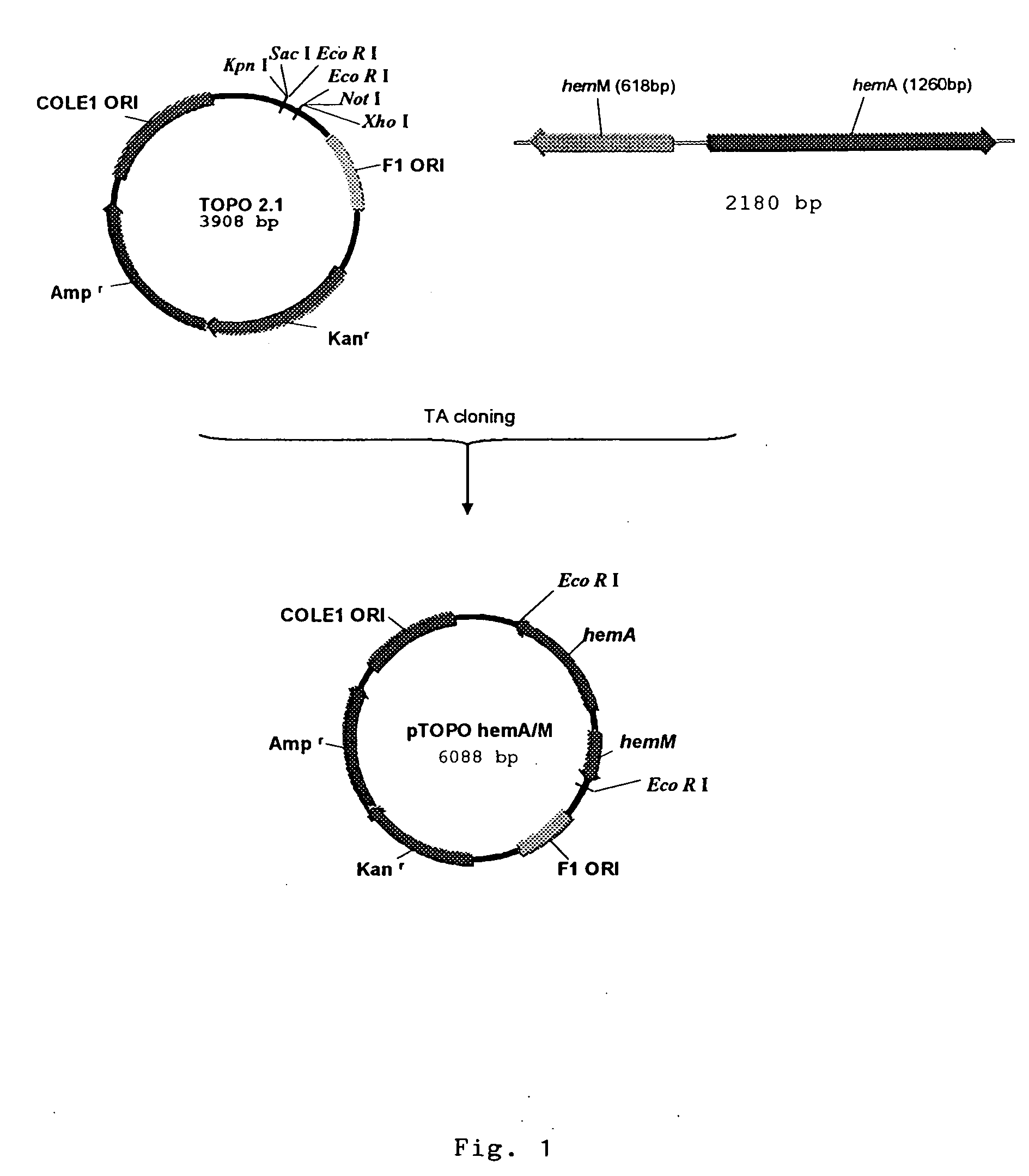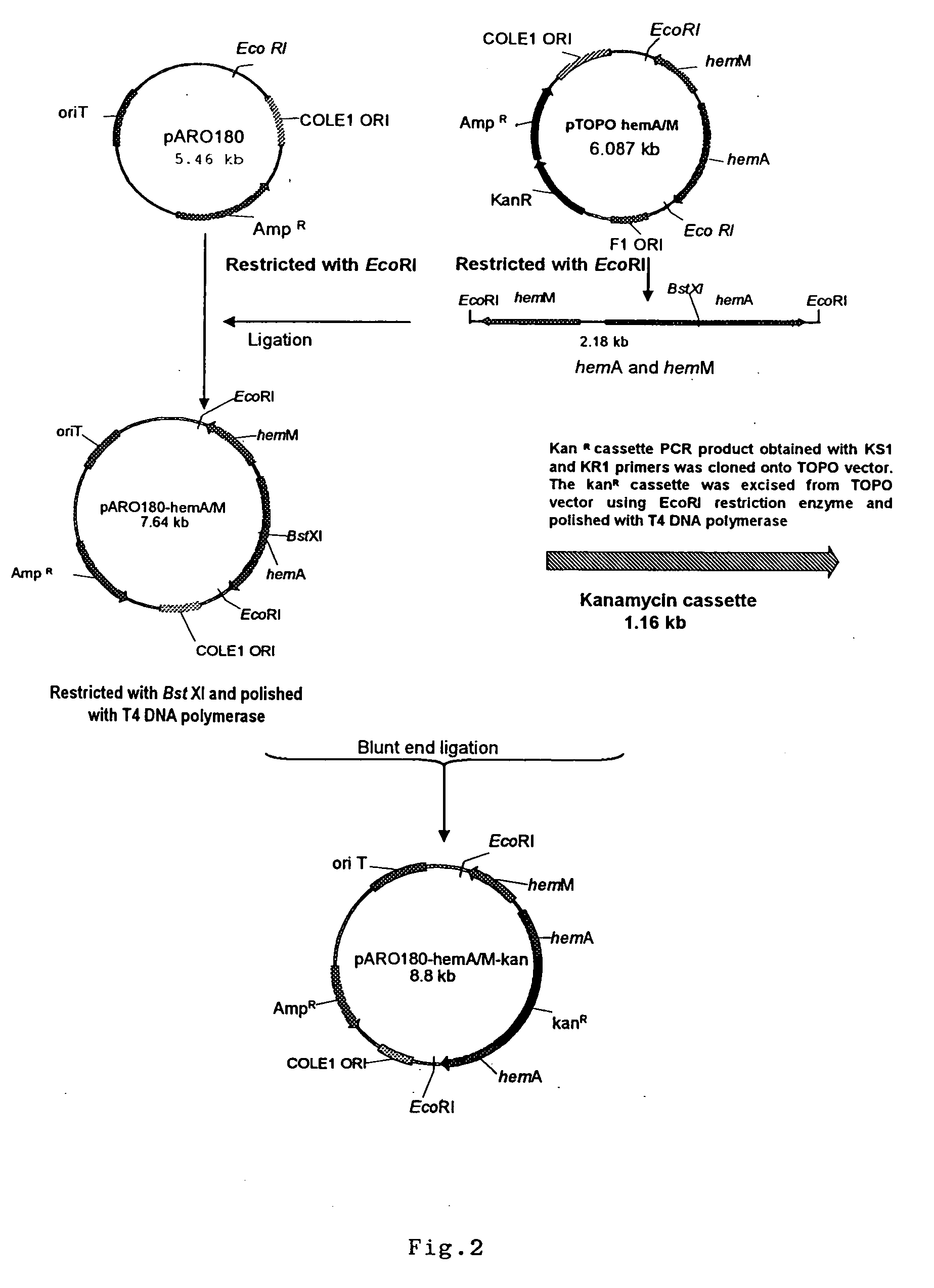Vibrio cholerae strains VCUSM1 and VCUSM4, method of producing same, and vaccine derivatives thereof
a technology of cholerae and vcusm4, which is applied in the field ofvibrio cholerae strains, can solve the problems of vaccine strains that cannot synthesize aminolevulinic acid (ala) de, and cannot survive in environmental waters such as sea, river and sewage, and achieve good colonization ability, good safety properties, and limited in vitro and in vivo growth.
- Summary
- Abstract
- Description
- Claims
- Application Information
AI Technical Summary
Benefits of technology
Problems solved by technology
Method used
Image
Examples
examples
(METHODOLOGY)
Construction of VCUSM1 Strain
[0078] For the first time in the literature, the hemA gene, which encodes glutamyl t-RNA reductase has been isolated and cloned by the inventors (Seq. ID No. 1). The hemA gene plays a major rate-limiting step in δ-Aminolevulinic acid (ALA) synthesis. Since ALA is essential for tetrapyrrole biosynthesis, mutation of hemA gene in V. cholerae leads to depletion of ALA, which in turn leads to limited growth in normal in-vitro and in vivo condition.
[0079] The hemA / M gene was amplified using polymerase chain reaction (PCR) using a forward primer VHF 5′ GACCTGTGATGTAAAGGAAC 3′ (Seq. ID No.4) and a reverse primer VHR 5′ CTTCATAGCGCTCAACAAGG 3′ (Seq. ID No.5). The PCR conditions were 95° C. for 3 minutes, 95° C. for 30 seconds, 58° C. for 30 seconds, 72° C. for 45 seconds. 72° C. for 5 minutes. Total numbers of cycles were 30. Wild type O139 bacterial lysate was used as template for PCR.
[0080] A 2180 bp PCR product (Seq. ID No.1) was expected. Th...
PUM
| Property | Measurement | Unit |
|---|---|---|
| length | aaaaa | aaaaa |
| pH | aaaaa | aaaaa |
| volume | aaaaa | aaaaa |
Abstract
Description
Claims
Application Information
 Login to View More
Login to View More - R&D
- Intellectual Property
- Life Sciences
- Materials
- Tech Scout
- Unparalleled Data Quality
- Higher Quality Content
- 60% Fewer Hallucinations
Browse by: Latest US Patents, China's latest patents, Technical Efficacy Thesaurus, Application Domain, Technology Topic, Popular Technical Reports.
© 2025 PatSnap. All rights reserved.Legal|Privacy policy|Modern Slavery Act Transparency Statement|Sitemap|About US| Contact US: help@patsnap.com



